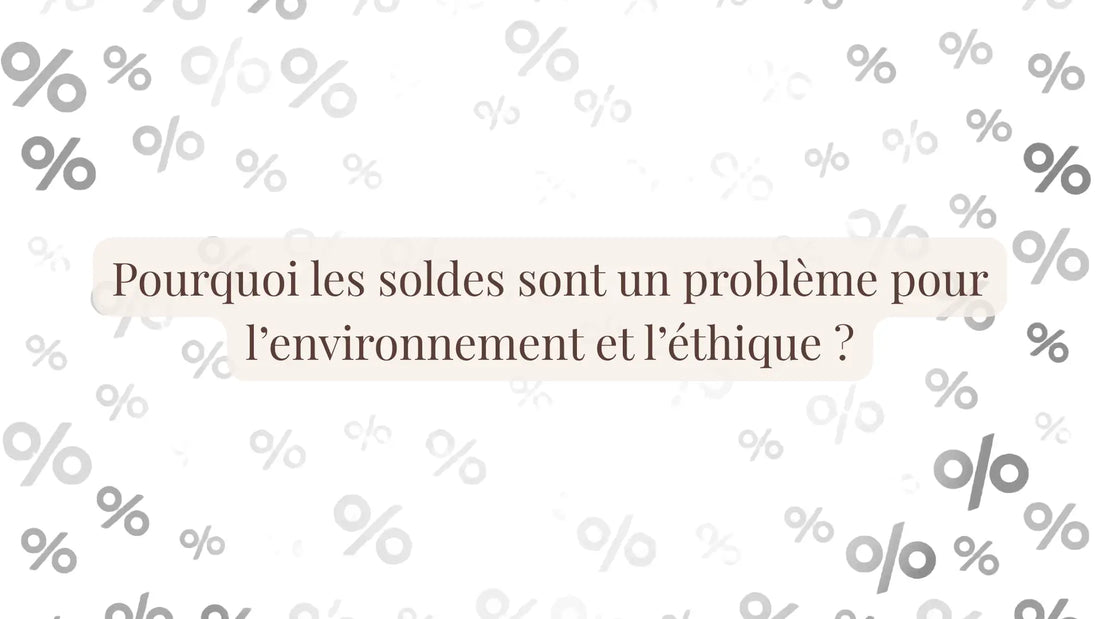
Why sales are an environmental and ethical problem
share
Sales, often perceived as an opportunity to save money, conceal a much more complex reality. Between consumer manipulation, overconsumption, waste of natural resources, and exploitation of workers, they raise numerous ethical and environmental questions. Here's a breakdown of the hidden impacts of sales and solutions for consuming differently.
A well-orchestrated manipulation
The main problem with sales lies in the marketing techniques that influence your behavior. Officially dedicated to clearing unsold stock, they mainly serve to encourage unnecessary overconsumption. To achieve this, numerous cognitive biases are used:
- FOMO ( Fear of Missing Out ): The fear of missing out on a good deal is amplified by ubiquitous advertising and urgent messages like “Last few days!”. The result: you buy under pressure, often without any real need.
- The anchoring effect: Displaying a high starting price followed by a sale price gives the illusion of a big saving. However, this starting price is rarely representative of the product's true value.
- The scarcity effect: “only 2 items left in stock”, “limited offers”… These frequently used phrases create a false sense of urgency to encourage you to buy quickly.
A disconnect with the real value of the products
Sales often mask questionable practices related to the high margins of major retailers. A 70% discount at the very beginning of the sale raises an obvious question: how can this garment be profitable at this price?
The answer is simple: some brands artificially inflate their prices before sales or offer items specially designed for these periods, often of lower quality. Conversely, eco-responsible brands, with fairer margins and transparent production costs, rarely offer big discounts. Their priority is to offer sustainable and ethical products all year round.
An unsustainable model based on overproduction
Sales directly support fast fashion, an economic model based on overproduction. According to ADEME, each French person buys an average of 9.5 kg of textiles per year. Yet, a large portion of these clothes are only worn two or three times before being thrown away!
To maintain this vicious cycle, major retailers are multiplying their collections, some offering more than ten per year. This constant renewal is detrimental not only to product quality, but also to workers and the environment.
A disastrous environmental impact
The fashion industry is one of the most polluting in the world. Every step, from production to transportation, consumes a huge amount of natural resources: water, energy, and agricultural land.
Sales, by encouraging frenetic consumption, exacerbate this problem. Buying less but better is one solution to limit this impact.
Human and social exploitation
Finally, the sales would not be possible without low-cost production, often carried out in countries where workers are underpaid and work in deplorable conditions. Mass production at low prices relies on the systemic exploitation of workers, a far cry from the values of ethical and responsible fashion.
How to act in the face of this model?
To consume more responsibly:
- Ask yourself the right questions: Do you really need this item? Learn to differentiate between an impulse purchase and an essential need.
- Look to eco-responsible brands: these brands favor sustainable materials, fair margins and ethical practices.
- Educate yourself about company values: Your money supports a business model. Take the time to choose the one that aligns with your beliefs.
- Opt for second-hand: giving new life to already produced clothes is an excellent alternative to buying new.
Changing your consumption habits takes time and thought. But every choice counts in building a more sustainable model that respects living beings and the planet.
Source :
https://presse.ademe.fr/2024/11/black-friday-consommer-mieux-consommer-moins.html
https://thefairdude.fr/be-fair/comment-fonctionne-le-recyclage-textile/
https://multimedia.ademe.fr/infographies/infographie-mode-qqf/
Photo credit:
starline on Freepik




